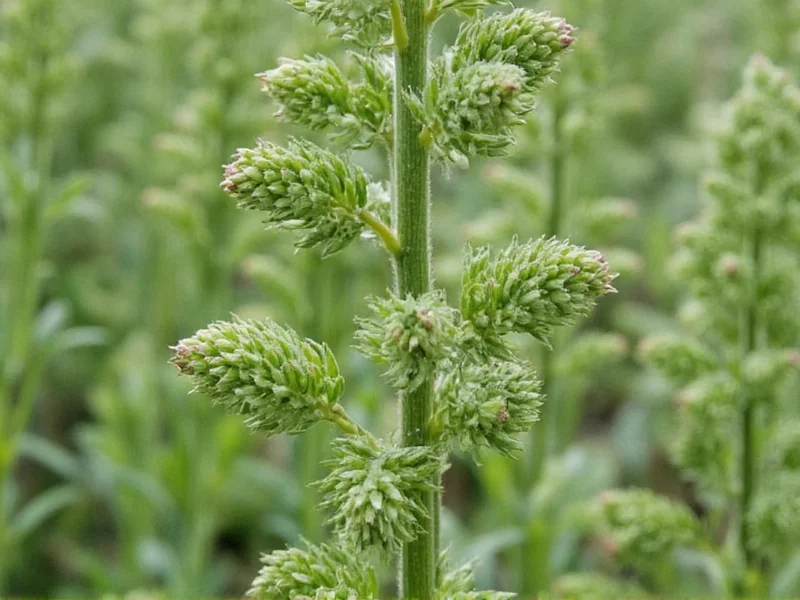When searching for what is a dillweed, many people encounter confusion between the culinary herb and a popular cultural reference. This comprehensive guide clarifies both meanings with botanical accuracy and cultural context.
Botanical Definition: Dill Weed as an Herb
Dill weed (Anethum graveolens) is the leafy part of the dill plant, distinct from dill seed which comes from the same plant's flowers. This aromatic herb belongs to the Apiaceae family, sharing botanical relations with parsley, celery, and cilantro. Fresh dill weed features delicate, feathery fronds with a distinctive flavor profile that combines citrus notes with subtle anise undertones.
Gardeners cultivate dill weed in temperate climates worldwide, typically planting seeds directly in soil after the last frost. The plant reaches 2-4 feet in height with hollow stems and compound leaves. Harvesting occurs when the plant develops its first flower buds, as this represents peak flavor concentration before the plant's energy shifts to seed production.
Culinary Applications of Dill Weed
Chefs and home cooks value dill weed for its versatility across multiple cuisines. Unlike many herbs that lose flavor when dried, dill weed retains significant aromatic compounds in both fresh and dried forms, though fresh dill offers superior brightness.
| Culinary Application | Recommended Form | Flavor Pairing |
|---|---|---|
| Salmon dishes | Fresh | Lemon, capers, mustard |
| Pickling | Fresh or dried | Vinegar, garlic, mustard seed |
| Dips and sauces | Fresh | Sour cream, yogurt, garlic |
| Vegetable dishes | Dried | Butter, potatoes, cucumbers |
Professional chefs recommend adding fresh dill weed at the end of cooking to preserve its volatile oils, while dried dill weed benefits from earlier incorporation to allow flavor development. Scandinavian cuisines feature dill prominently in gravlax and fish preparations, while Eastern European traditions use it extensively in borscht and potato salads.
The Simpsons Connection: Dillweed as Pop Culture Reference
The term dillweed gained widespread recognition through its use in the animated television series The Simpsons. Character Ned Flanders frequently employs "dillweed" as a mild expletive or term of endearment, creating what linguists call a minced oath—a softened substitute for stronger language.
This usage represents a deliberate misspelling of "dill weed" that transforms the herb's name into a slang term. The show's writers created this linguistic play to maintain family-friendly content while giving characters distinctive speech patterns. Over decades of broadcast, this fictional usage has influenced real-world language, causing confusion between the botanical term and the pop culture reference.
Common Misunderstandings About Dillweed
Several misconceptions persist regarding what is a dillweed:
- Dillweed vs. dill seed: Many believe these are different plants, but they come from the same botanical source at different growth stages
- Medicinal claims: While traditional medicine uses dill, scientific evidence for health benefits remains limited
- Perennial status: Dill is an annual plant in most climates, contrary to beliefs that it returns yearly
- Substitution capabilities: Dill weed cannot adequately replace fennel or anise despite flavor similarities
Gardeners often struggle with dill's tendency toward bolting—premature flowering that reduces leaf production. Success requires regular harvesting and planting in partial shade during hot weather. The plant's self-seeding nature means it often returns in subsequent seasons, creating the illusion of perennial growth.
Practical Guide to Using Dill Weed
For optimal culinary results with dill weed, follow these evidence-based recommendations:
- Storage: Keep fresh dill weed in a glass of water (like flowers) covered with a plastic bag in the refrigerator for up to one week
- Drying: Air-dry small bunches upside down in a dark, well-ventilated space to preserve maximum flavor
- Substitutions: When dill weed is unavailable, use equal parts fresh tarragon or a combination of parsley and a pinch of fennel seed
- Cooking timing: Add fresh dill during the last 5 minutes of cooking; dried dill benefits from 10-15 minutes of simmering
Food scientists note that dill's essential oil composition changes significantly when dried, with monoterpenes decreasing while sesquiterpenes remain stable. This explains why dried dill has a more earthy, less citrus-forward profile than fresh.
Botanical Characteristics of Dill Weed
Understanding the plant's biological features helps gardeners and cooks appreciate what is a dillweed beyond surface-level definitions. Dill (Anethum graveolens) features:
- Finely divided, thread-like leaves arranged in alternate patterns
- Yellow flower clusters forming umbrella-shaped umbels
- Taproot system with secondary fibrous roots
- Height ranging from 18-60 inches depending on growing conditions
- Flowering period typically occurring 60-90 days after planting
The plant's essential oils—primarily carvone and limonene—contribute to its distinctive aroma and flavor. These compounds serve ecological functions in nature, deterring certain pests while attracting beneficial insects like ladybugs and hoverflies.
Historical and Cultural Significance
Dill's history spans millennia, with archaeological evidence of its use dating to ancient Egyptian times. The name derives from the Norse word dilla, meaning "to lull," referencing its traditional use in soothing infant colic. Roman soldiers applied dill to wounds believing it promoted healing, while medieval Europeans placed dill fronds in doorways to ward off witchcraft.
The transition from "dill weed" to "dillweed" as a single word represents linguistic evolution through popular culture rather than botanical accuracy. This shift exemplifies how media influences language development, creating what linguists call rebracketing—the reinterpretation of word boundaries.











 浙公网安备
33010002000092号
浙公网安备
33010002000092号 浙B2-20120091-4
浙B2-20120091-4